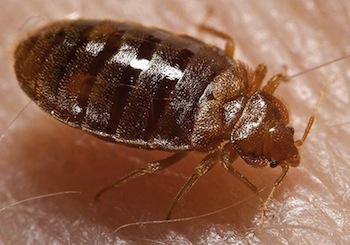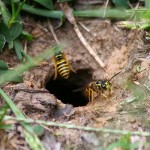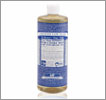With the 2016 spread of the Zika virus and its link to microcephaly, proper mosquito control became something that people wanted and needed to understand more than ever. [The Aedes mosquito can carry Zika; this CDC map shows the areas that reported active transmission of Zika.] Some types of mosquitoes can also transmit malaria, West Nile virus, equine encephalitis, dengue fever, yellow fever, and other serious diseases in various regions of the world. (Other types of mosquitoes are also responsible for infecting dogs with heartworm.)
Climate change is contributing to the increase in some tropical diseases, due to higher temperatures and more precipitation in many areas, in the tropics and beyond. [Source: The Guardian]
 Unfortunately, conventional tactics for killing mosquitoes are not always effective, and they tend to be toxic. Zika can harm the development of fetuses and can harm some adults; meanwhile, exposure to toxic insecticides can harm everyone (including fetuses). It doesn’t make sense for society to accept that we should have to suffer from the long-term effects of slow poisoning (e.g., chronic and fatal illnesses) from insecticides and pesticides when less-toxic, effective alternatives exist. We cannot just “fog” the world in a cloud of insecticides to try to avoid Zika or other mosquito-borne viruses. Furthermore, the use of insecticides often backfires and has unintended consequences, such as killing other insects and animals that eat mosquitoes.
Unfortunately, conventional tactics for killing mosquitoes are not always effective, and they tend to be toxic. Zika can harm the development of fetuses and can harm some adults; meanwhile, exposure to toxic insecticides can harm everyone (including fetuses). It doesn’t make sense for society to accept that we should have to suffer from the long-term effects of slow poisoning (e.g., chronic and fatal illnesses) from insecticides and pesticides when less-toxic, effective alternatives exist. We cannot just “fog” the world in a cloud of insecticides to try to avoid Zika or other mosquito-borne viruses. Furthermore, the use of insecticides often backfires and has unintended consequences, such as killing other insects and animals that eat mosquitoes.
 Here are some key excerpts from a very helpful article from Beyond Pesticides, which references information from an article in The Guardian:
Here are some key excerpts from a very helpful article from Beyond Pesticides, which references information from an article in The Guardian:
“Aerial and ground applications of pesticides have long been used for mosquito control, but many believe that these methods fail to sufficiently control mosquito populations, [and that they] promote resistance and kill other species that would have acted as a natural predator to mosquitoes.
Dino Martins, PhD, a Kenyan entomologist, in an interview with The Guardian said that while pesticides can reduce the population of flying adult mosquitoes that transmit the virus, they will fail to deal with the epidemic that threatens to become a global pandemic, and warns that spraying landscapes is extremely dangerous. ‘It is a quick fix but you pay for it. You kill other species that would have predated on the mosquitoes. You also create a mosaic of sprayed and unsprayed low densities of chemicals that fosters the rapid evolution of resistance.’
Already there is emerging resistance to insecticides among Anopheles mosquitoes. Additionally it is impossible to fumigate every corner of habitat where mosquitoes might breed.
According to Dr. Martins, the explosion of mosquitoes in urban areas, which [drove] the Zika crisis, is caused by a lack of natural diversity that would otherwise keep mosquito populations under control, and the proliferation of waste and lack of disposal in some areas which provide artificial habitat for breeding mosquitoes.
The efficacy of adulticidal pesticide applications (aerial or ground spraying) has been called into question over the years. Further, the drifting spray impacts other non-target organisms like pollinators, birds, fish and amphibians. Commonly used mosquito pesticides like permethrin, resmethrin, naled and malathion are all associated with some measure of human and ecological health risks, especially among people with compromised immune systems, chemically sensitized people, pregnant women, and children with respiratory problems, such as asthma.
…Individuals can take action by eliminating standing water, introducing mosquito-eating fish, encouraging predators, such as bats, birds, dragonflies and frogs, and using least-toxic larvacides like bacillus thuringiensis israelensis (Bt). Through education of proper cultural controls, and least-toxic and cost effective biological alternatives, the use of hazardous control methods, such as toxic pesticides, can be eliminated.
- Clean-Up–Eliminate pooled or stagnant waters from debris, containers, drains, and anywhere that pools water. Watch out for [and fix] leaky faucets. Mosquitoes can breed in puddles the size of dimes, so keep a keen eye out for stagnant water!
- Natural Predators– Use indigenous fish populations, like bluegills or minnows, to eat mosquito larvae in shallow waters and ornamental pools. Copepod crustaceans can also be used to eat mosquito larvae in ditches, pools and other areas of stagnant water. Don’t forget about bats either! One bat can consume 1,200 mosquitoes in an hour, and many bats are in trouble from a disease wiping out their population. Help conserve these important mammals while keeping the mosquito population down by installing a bat house!
- Behavior Modification–Wear long sleeves and long pants/skirts, and use least-toxic mosquito repellent when outdoors. Try to avoid being outside at dusk when mosquitoes are most active.
- Attentive Monitoring– Check sources of water for signs of mosquito larvae often.
- Least-toxic Pesticide Options– Use Bacillus thuringiensis israelensis (Bt), a biological larvicide (“mosquito dunk”) that prevents mosquitoes from developing into breeding, biting adults in standing waters that cannot be drained.
- Take Action–Let your local council members, mayor, or state delegates know that safer, more sustainable options exist. [Click here and scroll to the bottom of the article to] download our sample letter to send to public health officials in your area.
Beyond Pesticides’ Mosquito Management program page has a list of resources that can help you and your community safely manage mosquitoes, including least-toxic mosquito repellents, bed nets, and proper clothing that can be used to keep mosquitoes safely at bay.”
In addition to the behavior suggestions mentioned above, these are some other useful suggestions for keeping mosquitoes (and other bugs) away:
- Make sure any windows that get opened have window screens, and repair/tape any tears in the screens.
- Turn on a fan. Mosquitoes avoid strong wind.
- Remove all standing and stagnant water from your yard. Don’t let excess water sit in plant pot dishes. Clear out debris from gutters. Remove water from birdbaths, any discarded tires, unused water troughs, etc. If you use rain barrels, make sure they have screens and that the screens are on tightly. If you have a compost pile, make sure it has drainage, is not soggy, is covered with a thick layer of leaves or grass clippings, and is not located right next to your living quarters. Running/moving water is generally OK, as mosquitoes larvae cannot grow there.
- Cover up with loose, light-colored clothing. Wear shoes and socks instead of sandals. Change and wash your socks and clothing regularly, as mosquitoes are attracted to stinky feet and sweat.
- Use mosquito netting over baby carriers, strollers, beds, etc.
- Avoid drinking beer or eating/drinking dairy products when in a mosquito-prone environment. They seem to be attracted to beer and possibly also to lactic acid.
- Methods and products that don’t work or don’t work well include: 1.) Ultrasonic devices. 2) Vitamin B patches. 2.) Repellent candles (e.g., citronella candles): They don’t work nearly as well as clothing or skin treatments, and 3) Bug zappers: They may actually attract more mosquitoes and other bugs to the area, and they can kill beneficial bugs.
Repellents
There’s no need to coat your skin or clothes with highly toxic chemicals to avoid being bitten by mosquitoes. Studies are finding that mosquito repellents that use oil of lemon-eucalyptus (with some PMD) are just about as effective as DEET, and they last longer. Picaridin (or icaridin, or KBR 3020) is a less-toxic synthetic repellent than DEET and it works almost as well. The EcoSmart organic insect repellent (which uses a variety of botanical ingredients) was also found to work well, but it needs to be reapplied frequently (every 2-3 hours). [Sources: NPR and EWG]
Consumer Reports gave these three DEET-free repellents their top ratings: Sawyer—Fishermen’s Formula Picaridin; Repel—Lemon Eucalyptus; and Natrapel 8-hour. [For more information on those three products, see this article.] A friend of mine, who runs a summer farm camp and has tried many repellents, swears by All Terrain’s Herbal Armor repellent (which is also DEET-free).
Avoid using permethrin-based repellents, even those used to treat clothing and not applied to skin. Also avoid products with more than 30% DEET. And don’t use “foggers.” Those are all very toxic. Also, don’t use any aerosol sprays (use lotions or pumps instead). Don’t use repellents on babies under 6 months, and don’t use lemon-eucaluptus/PMD on children under 3 years old. [Source: EWG’s Guide to Bug Repellents: Top Choices, and Do’s and Don’ts for Avoiding Bug Bites]
Other than lemon-eucalyptus oil, most botanical/plant-based repellents have not been found to be as effective as DEET or Picaridin-based repellents (especially for repelling the types of mosquitoes that can carry Zika). However, you could still experiment with rubbing a few of these bug-repelling plants on your skin or clothes (try a small area first, to make sure it doesn’t cause an allergic reaction). Better yet, planting some of these herbs and plants in your yard could help reduce the mosquitoes (and also fleas and ticks) in the area around your house. (Always be sure to buy organic—or non-treated—plants or seeds, so that they don’t kill off pollinators and other beneficial bugs and creatures.) Turning your yard into a thriving garden will also help create more much-needed habitat for beneficial bugs, birds, and other species that help keep the mosquito population under control.
- Anise
- Basil
- Bayberry (shrub)
- Calendula
- Catnip and catmint
- Chives
- Cloves
- Feverfew
- Garlic
- Geranium (especially citronella geranium)
- Hyssop
- Lantana
- Lavender
- Lemongrass
- Lemon eucalyptus
- Marigold
- Mint, peppermint
- Mugwort
- Onion
- Rosemary
- Sage
- Southernwood
- Sweet woodruff
- Tansy
- Thyme (especially lemon thyme)
- Wormwood
- Yarrow
[Sources: Book: Naturally Bug-Free: 75 Nontoxic Recipes for Repelling Mosquitoes, Ticks, Fleas, Ants, Moths & Other Pesky Insects, by Stephanie Tourles, Storey Publishing, 2016; and “Repel Mosquitos with These Plants,” by Julie Fryer, Mother Earth News]
A company is currently working on developing Kite Patch and Kite Shield, technologies intended to prevent mosquitoes from detecting the CO2 that we emit, to make us virtually invisible to mosquitoes. Time will tell whether these technologies are effective. If they are, they are likely to become quite popular.
Unfortunately, many women who know that they got Zika during their pregnancy, or who live in areas where there are many Zika-carrying moquitoes, also happen to live in countries where contraception is not readily available or affordable, and/or where abortion is illegal and therefore unsafe. Many such women are contacting organizations like Women on Waves for help.
Resources and references:
EWG’s Guide to Bug Repellents in the Age of Zika (including tip sheets that you can print out), from Environmental Working Group
How to Repel Mosquitoes Safely, Beyond Pesticides
Mosquito Management and Insect-Borne Diseases, Beyond Pesticides
“With Zika Virus, Widespread Pesticide Spraying Not the Long-Term Solution, says Entomologist,” Beyond Pesticides
“Zika Virus: Pesticides are not a long-term solution says leading entomologist,” The Guardian
“What’s the Best Way to Keep Mosquitoes from Biting?,” NPR
“Three top-rated insect repellents that don’t contain DEET,” TreeHugger.com
Book: Naturally Bug-Free: 75 Nontoxic Recipes for Repelling Mosquitoes, Ticks, Fleas, Ants, Moths & Other Pesky Insects, by Stephanie Tourles, Storey Publishing, 2016
“Repel Mosquitoes with These Plants,” Mother Earth News
“Mosquito Deterrents: The Good, The Bad, and the Potentially Effective,” Smithsonian Magazine
Related post:


 Some conventional flea and tick treatments (including many of the topical, spot-on treatments that are applied directly onto pets’ skin, as well as flea collars, powders, and sprays, and even some ingestible products) contain highly toxic pesticides, some of which have been shown to cause a range of serious reactions in pets, from skin problems, vomiting, and excessive drooling to neurological problems (e.g., seizures or uncontrollable shaking), heart attacks, and death. So, tragically, some pesticides end up serving as pet-icides…
Some conventional flea and tick treatments (including many of the topical, spot-on treatments that are applied directly onto pets’ skin, as well as flea collars, powders, and sprays, and even some ingestible products) contain highly toxic pesticides, some of which have been shown to cause a range of serious reactions in pets, from skin problems, vomiting, and excessive drooling to neurological problems (e.g., seizures or uncontrollable shaking), heart attacks, and death. So, tragically, some pesticides end up serving as pet-icides… I’m not someone who delights in killing pests, and I don’t often advocate for their demise. In fact, I usually do my best to avoid killing them (e.g., if an indoor spider gets too close for comfort, I usually capture it in a jar and release it outside). However, I recently had to make an exception to my pacifist policy, when I noticed that yellow jackets had built a ground nest right next to the front door of our house. It was an underground nest in a flower bed. There were so many yellow jackets coming and going from the nest throughout the day that we were scared to keep our front door open for very long, and I worried that our dog would inadvertently step on the entry to the nest and get swarmed and attacked. Furthermore, I learned that some yellow jackets raid honeybee hives to steal their honey, and they kill honeybees in the process. This was a sufficiently good reason to get rid of the ground-nest jackets, in my opinion. One of our neighbors has a honeybee hive, so it felt like getting rid of these yellow jackets was a just and neighborly thing to do. (Honeybees are suffering from a Colony Collapse Disorder. For info about it,
I’m not someone who delights in killing pests, and I don’t often advocate for their demise. In fact, I usually do my best to avoid killing them (e.g., if an indoor spider gets too close for comfort, I usually capture it in a jar and release it outside). However, I recently had to make an exception to my pacifist policy, when I noticed that yellow jackets had built a ground nest right next to the front door of our house. It was an underground nest in a flower bed. There were so many yellow jackets coming and going from the nest throughout the day that we were scared to keep our front door open for very long, and I worried that our dog would inadvertently step on the entry to the nest and get swarmed and attacked. Furthermore, I learned that some yellow jackets raid honeybee hives to steal their honey, and they kill honeybees in the process. This was a sufficiently good reason to get rid of the ground-nest jackets, in my opinion. One of our neighbors has a honeybee hive, so it felt like getting rid of these yellow jackets was a just and neighborly thing to do. (Honeybees are suffering from a Colony Collapse Disorder. For info about it, 
